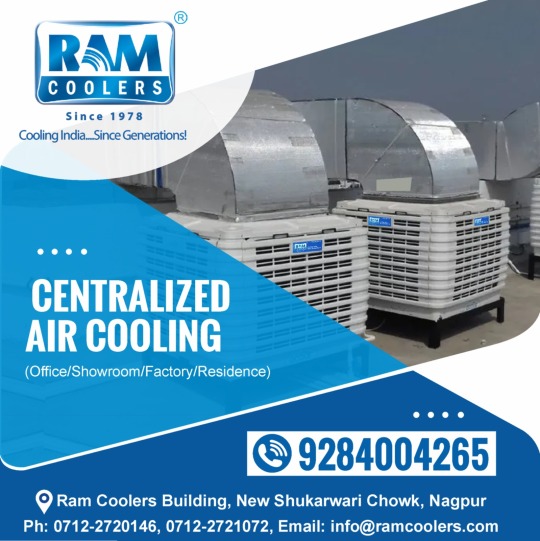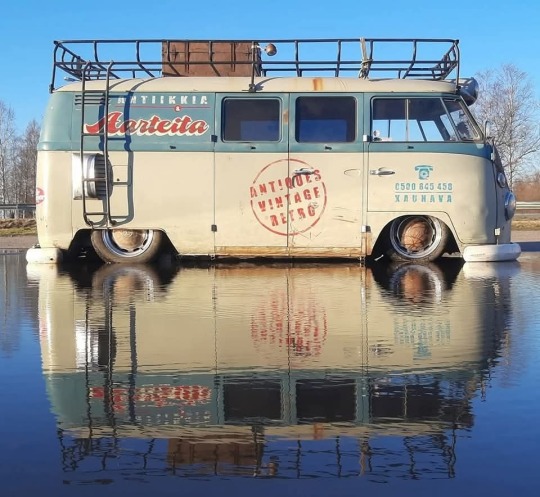#Aircooling
Explore tagged Tumblr posts
Text
Wooo, this one is for all of our fans of fans.

We got some 5V USB-cable fan samples, and we're testing them out. These are handy when you need air cooling or to add motion to lightweight robotics. They come in various sizes, from petite 4cm to bountiful 9cm, and have two mesh screens to keep wires and fingers from getting caught in the blades.
#adafruit#usbfan#aircooling#electronics#makerprojects#robotics#diycooling#techgadgets#engineeringtools#makerspace#techtesting#innovation#fanatics#hardwarehacks#diyelectronics#portablefan#smartgadgets#usbtech#airflow#fanprojects#usbtools#cooltech#tinkerers#gadgettesting#roboticsprojects#coolingfan#techdesign#engineeringlife#aircoolingfans
17 notes
·
View notes
Text
👇💥BUY HERE💥👇
#budolfinds #shopeefinds #Shopee #shopping #onlineshopping #shopeecheckout #budol #lazadafinds #lazadaBudol #lazadaph #lazadaPhilippines #lazLook #haul #hauling #tiktokph #tiktokshop #tiktokviral #cooler #aircon #fancooler #electricfan #aircooler #aircooling
SHOPEE👉 https://shope.ee/4VBdTbwvOp
LAZADA👉 https://s.lazada.com.ph/s.iuP8F
3 notes
·
View notes
Text
Stay Cool with EXAIR’s Cold Gun
Keep your tools cool and productivity high with EXAIR’s air-cooling system! Ideal for reducing heat in machining and grinding, the Cold Gun delivers spot cooling without messy liquids.
Shop Now: https://www.exair.com/cold-gun-sys2.html
0 notes
Link
When building a gaming PC, one of the most crucial aspects to consider is the cooling system. Over time, processors and graphics cards become increasi...
#Liquidcooling#Aircooling#GamingPC#Coolingsystem#PCcooling#Bestcoolingsolution#Overclocking#Gamingsetup#AIOcooling#Customliquidcooling
0 notes
Text
When Data Center Move From Air Cooling To Liquid Cooling

The Growing Cooling Challenge
Data centers are under unprecedented demands. These days, power densities frequently surpass 30 kW per rack, and the cooling load is further exacerbated by the higher thermal design power (TDP) of contemporary CPUs and GPUs.
Air cooling has been popular due to its affordability and convenience of use, but as costs and energy use rise, its downsides become obvious. Global data center electricity demand will more than quadruple between 2023 and 2082, and AI-driven data center capacity will climb 40.5% by 2071, according to IDC.
Energy efficiency is becoming increasingly important as power demands rise, yet efficient air cooling takes up a lot of space in data centers with limited space.
Can Air Cooling Keep Up?
Air cooling is still an option for many common workloads with lower densities (less than 10–15 kW per rack), especially in light of Dell’s advancements in airflow management and high-efficiency fans. While maintaining affordability for moderate demands, these advancements test the limits of air-cooled environments.
Air cooling does, however, have several disadvantages as power densities increase, such as rising cooling expenses, performance hazards from thermal throttling, and restricted scalability. Additionally, cooling-related outages may increase in frequency, increasing the requirement for repair and increasing the chance of operational downtime.
These issues could indicate that data centers need to think about a more effective cooling strategy if they anticipate expansion or are dealing with rising cooling expenses.
The Advantages of Liquid Cooling
Liquid cooling, which has better thermal conductivity, is growing in high-density data centers.
A recent NREL investigation found that liquid cooling can attain a Power Usage Effectiveness (PUE) of 1.05, compared to air-cooled systems’ 1.5-2.0. This means that liquid cooling can save up to 40% on energy costs when compared to air cooling.
In addition to conserving energy, liquid cooling can handle racks with densities greater than 20 kW, where air cooling begins to fail. Densities up to 264 kW can be handled by Dell’s Integrated Rack Scalable Systems (IRSS), and they may be able to manage even higher densities.
Additionally, by allowing for a higher computing density per rack, liquid cooling frees up important data center real estate. Additionally, liquid cooling results in quieter operations due to its decreased reliance on fans. By cutting waste and secondary cooling requirements, closed-loop systems that recycle cooling water provide an additional advantage and support sustainability objectives.
When Is the Right Time to Transition?
When specific indicators show up, the choice to move to liquid cooling is frequently obvious. One important consideration is power density; without significant improvements, air cooling finds it difficult to control temperatures when densities exceed 15-20 kW per rack.
An ineffective air-cooling system, which is expensive and difficult to maintain, may also be indicated by a growing PUE. The demand for more effective cooling is further heightened by rising energy costs, particularly as sustainability pledges increase. Liquid cooling lets data centers with limited space have more processing power without expanding.
Switching from air to liquid cooling isn’t life-threatening. An incremental technique is used by many data centers.
A Liquid-to-Air Cooling (LAC) CDU is one method that can promote denser workloads, boost efficiency, and lower energy usage. Water pipes are not needed to connect LAC CDUs to the data center because they use air as a heat transfer medium. It gives businesses the freedom to modify their cooling plan in response to changing data center requirements.
Retrofitting air-cooled systems with rear door heat exchangers (RDHx) is another hybrid approach. Businesses can keep using air-cooled servers and use the RDHx to add liquid cooling to them. A Liquid-to-Liquid CDU (LL CDU) uses the water infrastructure of the building to cool the servers and equipment for even greater cooling capacity. It is among the most effective and long-lasting techniques for cooling heavy workloads.
Organizations are not alone as they set out on this path. The Dell experts can plan, build, and implement a tailored cooling strategy to ensure a smooth data center liquid cooling transition.
A Forward-Looking Data Center Solution
Liquid cooling offers a convincing solution to the problems of high-density, high-performance settings for data centers looking to strike a balance between performance, scalability, and affordability. Many people still find success with air cooling, but as power demands increase, its limitations become more noticeable.
Superior energy efficiency, increased scalability, and alignment with environmental objectives are all provided by liquid cooling, which provides a forward-thinking solution that prepares data centers to handle the demands of the IT infrastructure of the future. Organizations can smoothly transition to liquid cooling and be prepared for the operations of data centers in the future by evaluating present and future requirements and creating a phased transition strategy.
Read more on Govindhtech.com
#DataCenter#AirCooling#LiquidCooling#airflow#LACCDUs#News#Technews#Technology#Technologynews#Technologytrends#Govindhtech
0 notes
Text
𝐌𝐢𝐧𝐢 𝐏𝐨𝐫𝐭𝐚𝐛𝐥𝐞 𝐇𝐮𝐦𝐢𝐝𝐢𝐟𝐢𝐞𝐫 𝐀𝐢𝐫 𝐂𝐨𝐧𝐝𝐢𝐭𝐢𝐨𝐧𝐞𝐫 𝐒𝐩𝐫𝐚𝐲 𝐂𝐨𝐨𝐥𝐢𝐧𝐠 𝐅𝐚𝐧 𝐖𝐢𝐭𝐡 𝟑 𝐒𝐩𝐞𝐞𝐝 𝐌𝐨𝐝𝐞.
Stay cool and refreshed with the Mini Portable Humidifier Air Conditioner Spray Cooling Fan, a versatile and compact solution designed to keep you comfortable in any setting. This innovative device combines the functions of a humidifier, air conditioner, and cooling fan into one portable unit, making it an ideal companion for home, office, or travel use. The fan features three adjustable speed modes, allowing you to customize the airflow to your preference. Whether you need a gentle breeze or a powerful blast of air, this cooling fan has you covered. The built-in spray humidifier adds moisture to the air, helping to combat dryness and providing a refreshing mist that cools you down even more effectively. Despite its compact size, this mini air conditioner is highly efficient. It uses advanced technology to cool and humidify the air, creating a comfortable environment without taking up much space.

Features:-
3 Speed Modes
USB Powered
Spray Humidifier
Compact and lightweight
Low noise levels ensure that you stay cool
#Electronicspices#aircooling#cooler#cooling#aircooler#rgb#pcbuild#pc#airconditioner#3SpeedFan#electronic#circuit#diy#voltage#module#12v#cable#electronics#Cooling Fan#dc Cooling Fan#Speed Mode#Electronicspicesapp
0 notes
Text

Portable Humidifier Fan Small Air Cooler for Office 3 Speed Fan
#aircooling#cooler#cooling#aircooler#airconditioner#airconditioning#fastercooling#motorcycle#music#my art#naruto#my sewing#mountains
0 notes
Text

𝐋𝐨𝐨𝐤𝐢𝐧𝐠 𝐟𝐨𝐫 𝐥𝐚𝐫𝐠𝐞-𝐚𝐫𝐞𝐚 𝐜𝐨𝐨𝐥𝐢𝐧𝐠 𝐨𝐫 𝐜𝐞𝐧𝐭𝐫𝐚𝐥𝐢𝐳𝐞𝐝 𝐚𝐢𝐫 𝐜𝐨𝐨𝐥𝐢𝐧𝐠❓
Contact Ram Coolers for the complete turnkey solution from centralized ducting to industrial air coolers.
Both metal and plastic coolers are available as per site requirements for cooling showroom, home/office, industrial shed, marriage hall, restaurant, or warehouse. Contact Mobile: 9884004265 today for a free site visit and estimate.
Website: https://www.ramcoolers.com/
#metalcooler#aircooling#centralisedaircooling#aircoolers#centralisedcooling#Nagpur#india#aircoolersupplier#industrialcooler#coolersupplier#aircoolingappliances#Ramcoolers
0 notes
Text

Porsche 993
#911#993#porsche#porsche 911#aircooled#aircooled porsche#classic cars#autos#car#cars#supercars#automobiles
429 notes
·
View notes
Text

IX XI
361 notes
·
View notes
Text

159 notes
·
View notes
Text

244 notes
·
View notes
Text

Blacked out Targa
3K notes
·
View notes
Text

Eu ❤️ Kombi
O Volkswagen Kombi foi um veículo comercial ligeiro produzido pela empresa automotiva alemã Volkswagen, entre 1950 e 2013. Por força de um decreto, os carros a partir de 2014, deveriam ser dotados de freio tipo ABS e possuir Airbag frontal duplo (para o condutor e passageiro do banco dianteiro). O antigo projeto mostrou-se incompatível com as novas exigências da legislação. No Brasil, foi fabricada ininterruptamente entre 2 de setembro de 1957 e 18 de dezembro de 2013, sendo praticamente o automóvel mais antigo no mercado do país. É considerada a precursora das vans de passageiros e carga. (via Wikipedia)
#volkswagen#volkslovers#volks#volksbrasil#kombi#kombilovers#vwkombi#automobilismo#beetle#fusquinha#vw#kart#fusca#kombihome#racing#car#aircooled#kombilife#brasil#volkslow#vanlife#karting#carros#germany#vwporn#vwbus#formula1#bug#vwcustom#f1
234 notes
·
View notes
Text

Mini Neck Fan Rechargeable Air Cooler 3 Speed Fans
#aircooling#cooler#cooling#aircooler#rgb#pcbuild#airconditioning#technology#fastercooling#deepcool#carrierairconditioner
0 notes
Text

Air-cooled Time Machine. Actually, this is my dream car :)
#35mm color film#35mm film#film photography#japan#kodak film#kodakphotography#photography#kodak#kodak portra 400#porsche#aircooled porsche#porsche 911#dream cars#time machine#blue#dazz cam#tokyo
70 notes
·
View notes